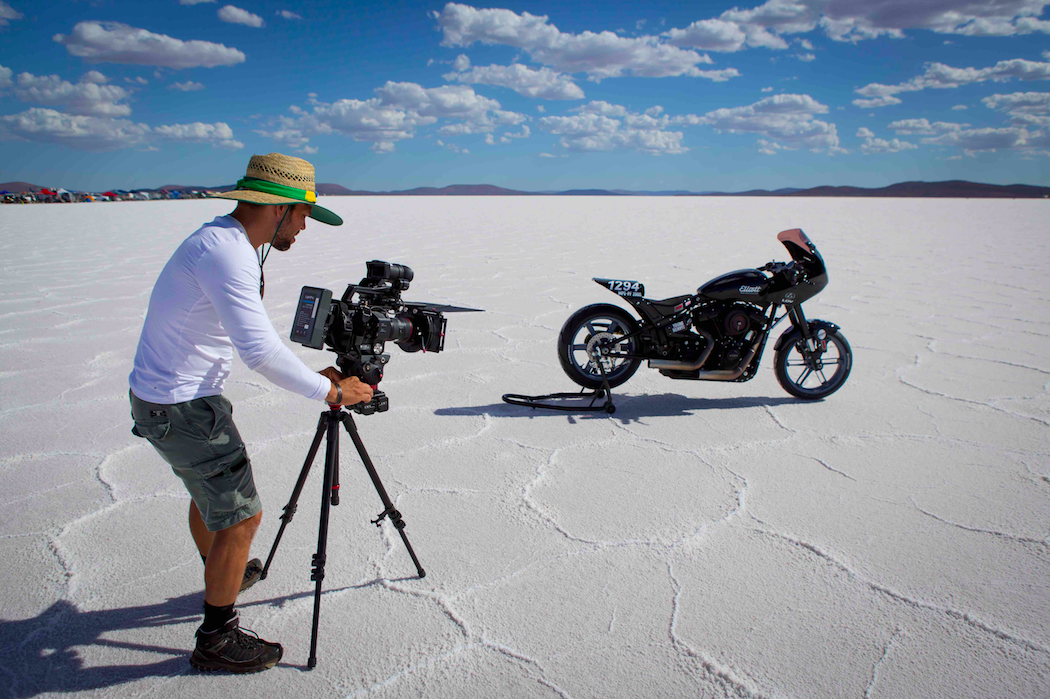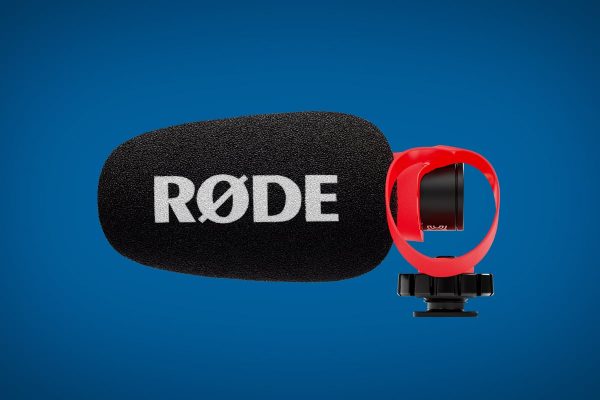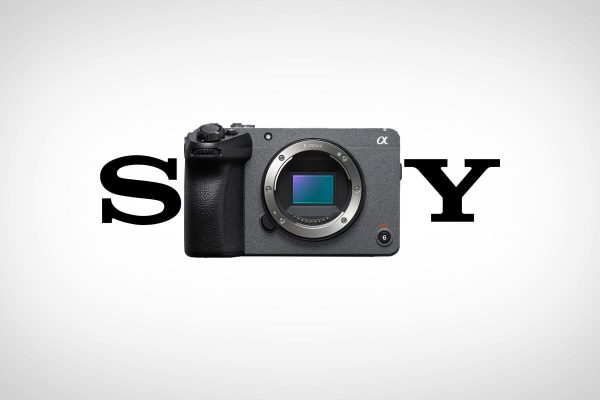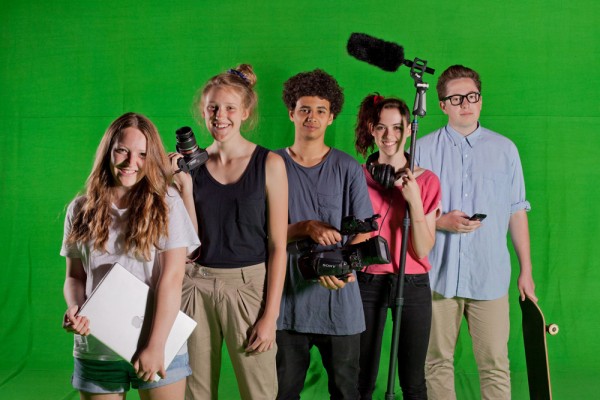Earlier this year Edgard Ferreira, Managing Director of Bondi Films, undertook an amazing project called The Ultimate Ride that would see a motorcycle team travel all the way to Lake Gairdner in South Australia on the search for speed records and adventure. What was produced as a result was a doco shot primarily on the Sony FS7 II and A7s and which is being shown now Qantas Qstream.
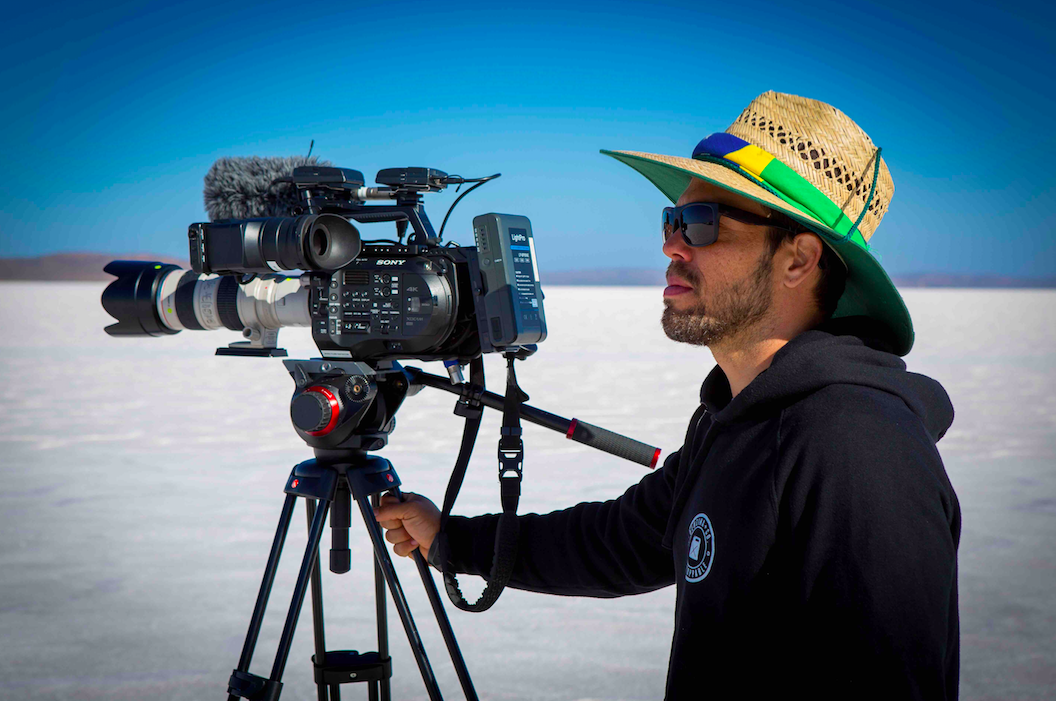
Edgard explained, “The great news is that Elliott Motorcycles has broken the land speed record on their division and they now have the fastest Harley Davidson Softail in the world. The documentary was filmed on Sony FS7 II and A7s cameras and its these amazing cameras that helped and continue to help me tell incredible stories.”
From the moment Edgard engaged with this project he had one big challenge to manage – expectation versus budget.
He said, “I knew from the beginning that I would have to work with a very small crew if not just myself and my co-director. I had big ideas for this project as it’s not every day that you have the opportunity to spend five days on the salt flats in Lake Gairdner with a custom-made Elliott Motorcycles Harley Davidson and the amazing Elliott Andrews riding the bike at such dangerous speeds. My problem revolved around how to bring this project together with only me as a DP being responsible for filming, sound recording and directing.”
According to Edgard this is where the Sony cameras, in particular the FS7 II really came into play.
He continued, “I knew I needed a camera that was easy to work with, something that I could pick up and start filming within seconds and on top of that give me amazing pictures. I also needed something that would allow me to record good quality sound – a camera that would allow me to set up radio mics and a shotgun mic while running and gunning. This camera was obviously the Sony FS7 II.”
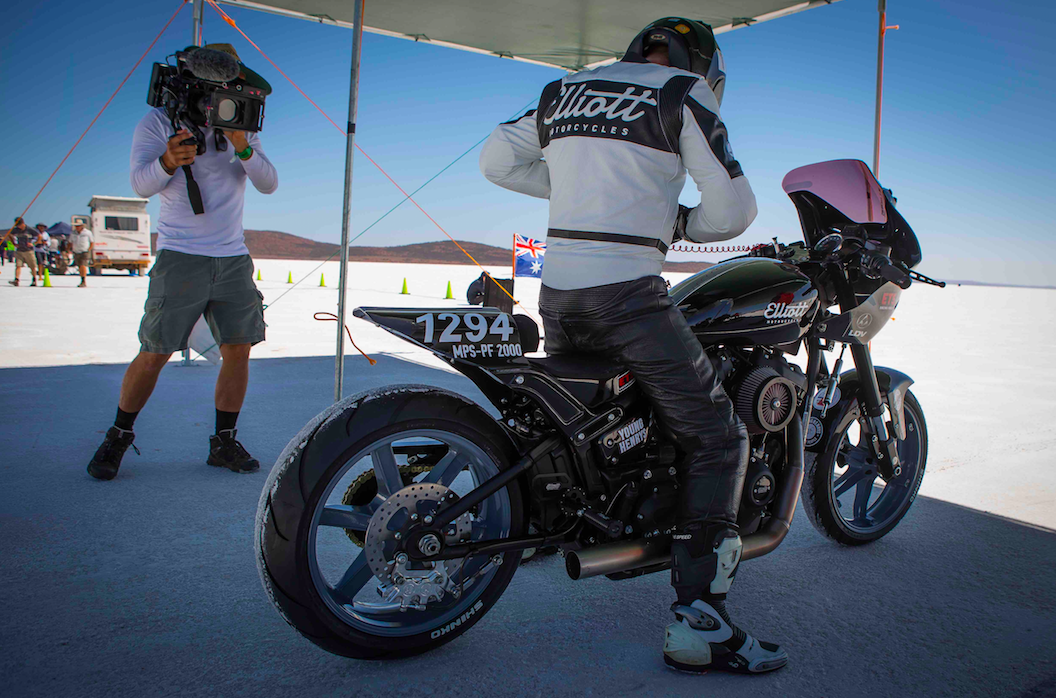
Lake Gairdner is a special place and the Bondi Films crew were planning on telling an amazing story, a story whose importance was not lost on Edgard.
He said, “Dramatising part of this story was a really important thing so, being able to capture high-quality slow motion without buffer was a key point. Also, after seeing some images from the salt flats it was clear to me that I needed a camera that could handle high dynamic range. This is the kind of place where humans cannot spend more than a few minutes without sunglasses. In the middle of the harsh desert of Australia, we were going to be racing on a crystal clear, salty white surface which would intensify the brightness of the sunlight. With all that in mind, using the Sony FS7 II for this project was a no-brainer. This camera covered all our technical requirements and more.”
Edgard faced some very challenging situations whilst he was on the salt plains, not least of which was the amount of ground and footage he and his co-director had to cover.
He continued, “The scenarios changed all the time and there wasn’t much warning as to when things were going to happen. Quite often I would be running around going from one location to another, filming from inside of a car to filming on the ground, with the camera handheld most of the time. As I was filming a documentary where I didn’t have much control over the changing environment, I needed to be highly adaptable. I had to always be ready for things to happen and so did my camera. There was no chance for second takes and having a camera like the FS7 II that felt good on my shoulder for 16 hours a day, made all the difference.”
It wasn’t just the ergonomics of the FS7 II that impressed Edgard, he also enjoyed its reliability and functionality adding, “I was amazed with the performance of the Sony FS7 II under such harsh, hot weather. I’m pleased to say that this camera did not stop working once. It just powered through the entire project, capturing important moments that otherwise would not be possible.”
Being a single DoP on a documentary project of this size and not having the luxury of having a second shooter can be quite challenging. There are so many angles to cover, so being quick between shots, changing angles from low to eye level and quickly adjusting exposure within seconds was very important for Edgard.
Edgard Ferreira concluded, “Quite often I see DPs having to reduce the speed at which they work to match the camera’s capabilities, but with the FS7 II I was able to work at a fast pace as the camera adapted to my workflow. One of the highlights of this camera is no doubt the variable ND filter. I was constantly faced with situations like going from dark scenarios to full bright sun. Being able to change my exposure using the variable ND filter instead of ND hard stops tweaking my F-Stop and not compromising the depth of field of my shot was truly remarkable. The results I had from five days filming on the salt flats of Lake Gairdner with the FS7 II were unique. Having the flexibility in post from shooting in s-log was really important to the story as my goal was to show the viewer the amazing true colours that this place offers.”

